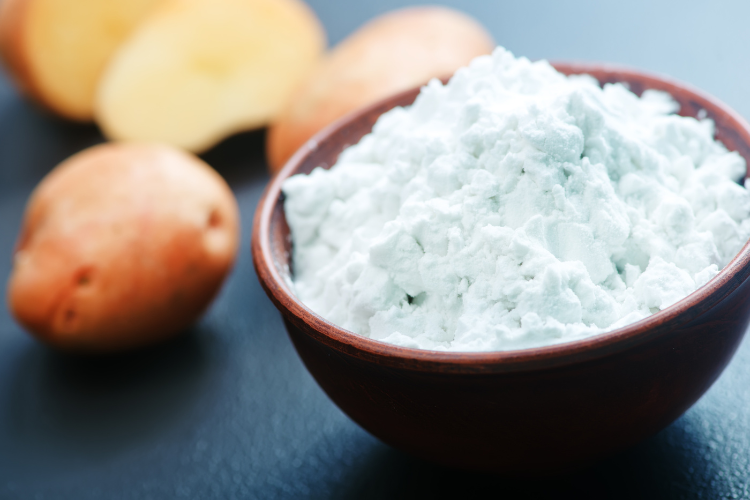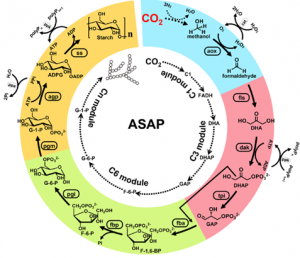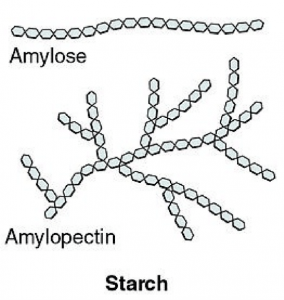
Food Made in a Test Tube: Artificial Starch Synthesis from CO2
Blog by Yixuan, Y1 undergraduate student, School of Biological Sciences.
Can you imagine producing food from the air? Yes, you can. Agriculture relies on plants converting carbon dioxide into carbohydrates, but can we make food without using plants? Now, we can… in 2021, Chinese scientists at the Tianjin Institute of Industrial Biotechnology (TIB) managed to synthesize starch in a cell-free manner after designing a clever and efficient novel chemo-enzymatic system.
Starch is a main energy source in human diets and a primary raw material for many industries, including paper, chemicals, and biodegradable plastics. Traditionally, starch is obtained from growing crops, but crop yields are susceptible to changes, which is exacerbated by the climate and biodiversity crises. The research of Cai’s team at TIB aimed to solve this problem by providing a controlled starch synthesis pathway.
“(Un)plant-based food”
The team reported a novel route for artificial starch synthesis from carbon dioxide (CO2) in September 2021. They used computer simulations to identify four possible starch synthesis pathways with the lowest energy costs and the fewest steps. After six years of research, the 11-step artificial starch anabolic pathway (ASAP) (see figure 1) not only managed to produce starch but also achieved an 8.5-fold increase in starch synthesis rate compared to naturally growing maize.

Fig 1. Computational artificial starch synthesis modules and detailed artificial starch anabolic pathway (ASAP). The inner circle is the computational modules of the pathway, dividing ASAP into 4 major modules, showing clearly how the carbon chain is progressively synthesized through 11 chemo-enzymatic steps. From Tao Cai et al., (2021). DOI: https://doi.org/10.1126/science.abh4049

Fig 2. General structure of amylose and amylopectin. From Lakna Panawala (2017), (https://www.researchgate.net/figure/Amylose-and-amylopectin_fig1_317037665)
“Can we eat it?”
There are two different types of starch found in nature: amylose and amylopectin (see figure 2). Amylose has a linear chain of glucose molecules, whereas amylopectin has a branched structure. These two types of starch are naturally mixed in crop products, but using this ASAP pathway, both can be synthesized separately and controlled.
One question that the public often asks Tao Cai is, “Can we actually eat the starch made in the lab?” The answer is yes, as proven by nuclear magnetic resonance (NMR) spectrum tests, showing that the lab-synthesized starch has the same structure as plant-synthesized starch. With this confirmation, we can now imagine how this pathway could potentially shift traditional agricultural planting into industrial manufacturing.
Next step and future
The next aim for Tao Cai’s team is to industrialize the Artificial Starch Anabolic Pathway (ASAP), enabling starch production at costs that are equal to or lower than traditional agricultural methods. The industrialized ASAP can save land and freshwater resources and reduce the need for pesticides and fertilizers that harm the environment. It potentially offers dual benefits: restoring environment, while also meeting human needs for food security and industrial manufacturing.
Furthermore, let’s remind ourselves that the starting point of ASAP is CO2. CO2 can be sourced from industrial processes like fossil fuel power generation and cement production, thus raising the possibility of some carbon capture loop. Rather than storing the carbon, we can use it. Thus, the future of artificial starch synthesis from carbon dioxide is promising
Additional information:
Please read the original research paper: Cell-free chemoenzymatic starch synthesis from carbon dioxide
Mandarin video presentation by the lead researcher Tao Cai of this project. However, there is no English subtitle available: 615|Tao Cai: Through artificial starch synthesis, can we possibly to “industrialize” agriculture?
Science news report: Chinese scientists report starch synthesis from CO2
Starch and industry: Chapter 3- Global production and use of starch from the book Starchy Crops Morphology, Extraction, Properties and Applications
This article aligns with United Nations Sustainable Development Goals: zero hunger (2), responsible consumption and production (12) and climate action (13)
To find out more about Environmental Sustainability: visit the Faculty’s intranet page, website, read our ES Good Newsletter or contact srbmh@manchester.ac.uk . For more information on Environmental Sustainability at the University watch this short film or visit their website.

0 Comments